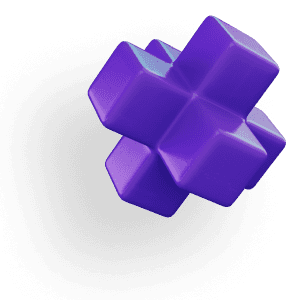HOW TO USE GPU
DaVinci Resolve 17 (Standard)
DaVinci Resolve is widely regarded as a powerful video editing tool, and enabling GPU acceleration enhances performance, particularly for tasks like video effects, color grading, and rendering. Here's how to enable GPU acceleration and optimize DaVinci Resolve 17 for smoother workflows.
How to Enable GPU Acceleration in DaVinci Resolve
Launch DaVinci Resolve
Open the program from its default path:C:\Program Files\Blackmagic Design\DaVinci Resolve\Resolve.exeEnable GPU Processing
Go to Preferences in the global navigation dropdown.

Under the Memory and GPU tab, set GPU Processing Mode to Auto or CUDA (if using NVIDIA GPUs).

In the GPU Selection section, choose Auto to let DaVinci Resolve automatically manage GPU allocation.
Enable GPU for Decoding

In the Decode Options tab, check Use GPU for Blackmagic RAW decode and Use GPU for R3D (for RED camera footage).
For R3D, select Decompression and Debayer from the dropdown.
These settings allow Resolve to fully leverage your GPU for faster playback and rendering.
Top Tips to Speed Up DaVinci Resolve
Update Your GPU Drivers
Make sure your NVIDIA or AMD drivers are updated regularly. DaVinci Resolve's performance heavily relies on GPU power, and updated drivers ensure you’re getting the most out of your hardware.Use Optimized Media
For smoother editing, create Optimized Media from larger files. This reduces processing requirements during playback without affecting final output quality.Lower Timeline Resolution
Temporarily reduce your timeline resolution to 1080p or lower while editing. This reduces strain on your system, particularly when applying complex effects, and you can switch back to a higher resolution before rendering.Enable Proxy Mode
Switch to Proxy Mode for real-time editing of large files. Proxy Mode downscales the preview resolution, speeding up timeline scrubbing and playback.Use an SSD for Project Files
Store your project files on an NVMe SSD to ensure faster read/write times, which significantly boosts performance when working with large video files or 4K footage.
DaVinci Resolve 17 System Requirements
Minimum Requirements:
Operating System:
Windows: Windows 10 Creators Update.
macOS: macOS 10.15 Catalina.
Linux: CentOS 7.3.
Processor: Intel Core i7 or AMD Ryzen 7.
RAM: 16 GB (32 GB when using Fusion).
Graphics Card: Discrete GPU with at least 2 GB of VRAM that supports OpenCL 1.2 or CUDA 11.
Storage: Solid State Drive (SSD) for OS and application installation.
Recommended Specifications:
Processor: Intel Core i9 or AMD Ryzen 9 for enhanced performance.
RAM: 32 GB or more, especially for complex projects.
Graphics Card: NVIDIA or AMD GPU with at least 8 GB of VRAM for smoother playback and rendering.
Storage: SSD for OS and applications; additional high-speed drives for media and cache.
Meeting these specifications will help you get the most out of DaVinci Resolve 17, ensuring efficient workflows and high-quality outputs. Keep in mind that more complex projects, especially those involving high-resolution footage or extensive effects, will benefit from higher-end hardware configurations.
Top Recommended GPUs for DaVinci Resolve

NVIDIA RTX 4090
As one of the most powerful GPUs available, the RTX 4090 excels at video editing, offering unparalleled performance in rendering, AI processing, and handling complex effects.NVIDIA RTX 3080
Known for its solid balance of power and price, the RTX 3080 is ideal for users working with 4K video and high-demand effects without breaking the bank.NVIDIA RTX 3060 Ti
A more budget-friendly option, the RTX 3060 Ti still provides excellent CUDA performance for DaVinci Resolve, handling most tasks smoothly, especially for 1080p and 4K timelines.
By enabling GPU acceleration and following these tips, you can dramatically improve the speed and efficiency of DaVinci Resolve 17, making it easier to work on larger, more complex projects with minimal lag.
Enjoy Faster Renderings and Workflow with Vagon
When the goal is to cut down rendering times and speeding up your workflow, every second saved is a victory. But what if you could do more than just save a few seconds?
With Vagon’s cloud PCs powered by 48 cores, 4 x 24GB RTX-enabled NVIDIA GPUs and 192GB of RAM, work on your projects faster than ever. It’s easy to use, right in your browser. You can transfer your workspace and files in just a few clicks and try it yourself!






